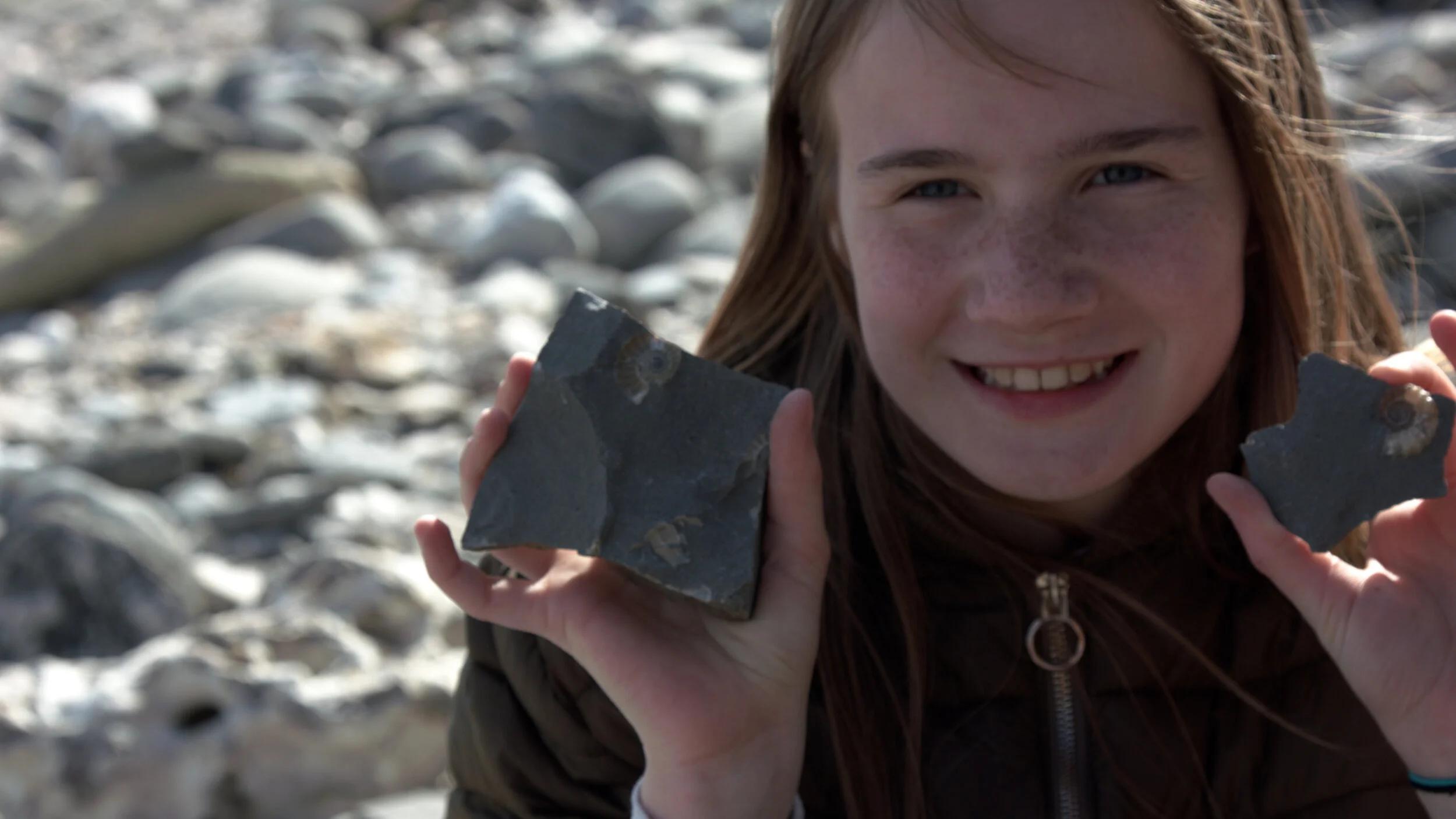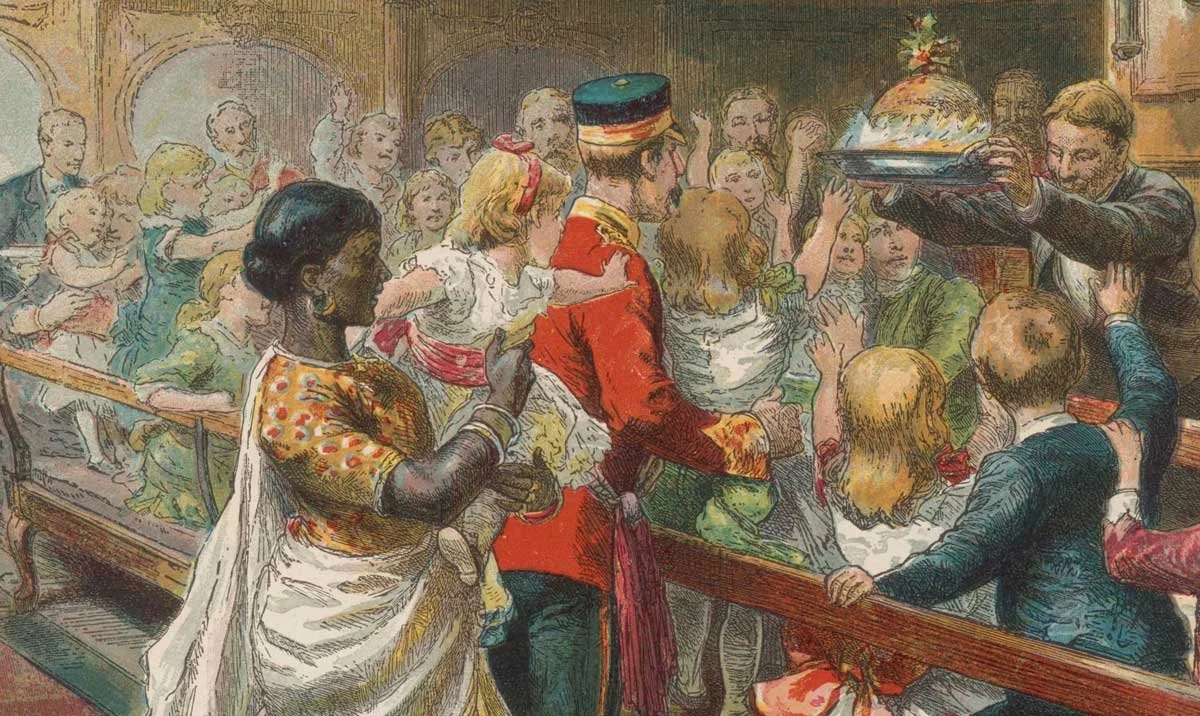Mary Anning Rocks: how a young campaigner is righting a centuries-old wrong
It’s 2018, and 11-year-old Evie is fossil hunting on Lyme Regis beach with her mum Anya. Suddenly, she stops dead and looks around her. ‘Why isn’t there a statue to Mary Anning, mum?’ she asks.
If that name isn’t familiar to you, you’re not alone. Despite making some of the most significant fossil discoveries of the 19th century, nearly 200 years on this Dorsetshire woman continues to receive pitiful recognition. That’s where Mary Anning Rocks comes in: Evie’s question sparked a crowdfunding campaign that has garnered international support and raised upwards of £100,000 to get a permanent memorial to Mary well on the way to reality.
At a time when how and why we commemorate history are highly scrutinised questions – and rightly so – Mary Anning Rocks offers an inspiring example of young people making the change they want to see in the world. This is a campaign about the future just as much as it is the past.
Firstly, though: who was Mary Anning, and why did she rock?
Ultimately nicknamed the ‘princess of palaeontology’ (yes, I’m imagining Ross Gellar dressed as Cinderella, too), Mary’s fossil findings from her Jurassic Coast home helped shape the earliest conceptions of prehistory and the evolution of species. In an era when women couldn’t taint lectures of the Geological Society of London with their presence, let alone become members, Mary discovered the first ichthyosaur and plesiosaur skeletons and possessed the scientific knowledge to contextualise their significance.
It was Mary who concluded that objects known as ‘bezoars’ were in fact the fossilised faeces of ancient fish – which puts a slightly different take on Harry Potter shoving a bezoar in Ron’s mouth, doesn’t it? Her achievements were no mean feat for a working class, religiously non-conformist woman in the 19th century, particularly one whose early life reads like a Dickens novel.
Born in 1799, Mary and her brother Joseph (yup) were the only two of ten siblings to reach adulthood. The first child died aged four when her clothes caught fire and Mary herself even diced with death when, at 15 months old, a neighbour cradled her whilst sheltering under an elm from a rainstorm.
A bolt of lightning hit the tree, killing the neighbour and two others – but not Mary. In fact, the episode reportedly turned her from a sickly child to robustly healthy. As if this wasn’t dramatic enough, the family lived so close to the sea that they once had to climb from an upstairs window to escape flooding.
Their father died of tuberculosis when she was just 11, charmingly leaving his family all his debts whilst simultaneously robbing them of their main breadwinner. Reliant on handouts to survive, Mary, Joseph and their mother scraped a living by selling fossils to wealthy tourists, building Mary’s geological expertise. This backdrop of very real hardship is a key reason why Evie is so inspired by Mary.
‘She has always been someone I have looked up to. She was poor and working class, which is why I think she is so cool. She accomplished so much on her own, without any help,’ says Evie.
Unlike the, er, controversial statue of Mary Wollstonecraft, Denise Dutton’s design for this Mary’s statue is a physical representation of the woman herself, and it’s that physicality which is its strength. She is mid-stride, head up and tools in hand, the swish of her skirt and suspension of her bag thrumming with energy. Indeed, this vitality was a core part of her story; contrary to the abiding image of the demure Victorian Angel in the House, Mary was scrambling around cliff faces in all weathers and facing the very real threat of regular landslides.
Mary’s faithful dog Tray, immortalised alongside her in the statue, was killed just feet from her by falling rocks. The sculptural style reminds me of Gillian Wearing’s statue of Millicent Fawcett, unveiled in 2018 after feminist campaigner Caroline Criado Perez realised all eleven plinths in Parliament Square commemorated men. Like Mary, Millicent is memorialised doing what she did, her unflinching gaze meeting the world head-on.
Sketches of the Mary Anning statue
Openly interrogating how we memorialise the past is something that Mary Anning Rocks feels passionately about. The only other statue of a named woman in the south west of England is of Nancy Astor in Plymouth (and that was only erected in 2019).
As well as being the first woman to take her seat in Parliament, Nancy also has a much more chequered history around her anti-Semitic, anti-Catholic and anti-Communist views. How should we approach commemorating the complexities of the past?
‘I believe it’s important that any contemporary memorialisation be contextualised for a modern audience; not doing this is precisely why some statues have now been toppled,’ Anya counsels. For example, ‘We are very open about some of the money Mary Anning received from her rich customers coming from the profits of the slave trade.
‘Not acknowledging this information and openly talking about it is wrong. We all need to own and learn from our shameful past so it’s never forgotten and, more importantly, so it never happens again.’
This isn’t the only way in which Mary Anning Rocks is looking to the future as well as the past. ‘You can’t be what you can’t see,’ said the American children’s rights activist Marian Wright Edelman, and this challenge is at the heart of the campaign. ‘Statistically speaking, girls outperform boys in STEM subjects (Science, Technology, Engineering & Maths) at GCSE and A Level… but when it comes to attending university and going into careers in the sciences, there is a huge decline.
‘We think that a visual celebration of Mary Anning’s incredible contributions to science is a way to address this imbalance, to create an example for our young women to follow.’
Raising the voices of the leaders of tomorrow is a core part of the campaign: local schoolchildren’s sketches were incorporated in the sculpture’s design, alongside online art projects to engage the community in T-shirt fundraisers. In Evie’s words, ‘I think it’s important local children had a say because they are the ones that will look after her longest.’
And safeguarding the longevity of the cause is, sadly, crucial, as even once the statue is erected there are more wrongs to right. It’s dismally unsurprising that, during Mary’s lifetime, most publications of specimens she found neglected to mention her name; in one private letter of hers, she states how ‘the world has used me so unkindly,’ which to me seems quite an understatement.
However, what’s more staggering is that some museums displaying fossils she discovered still only exhibit the names of the wealthy, educated men that bought them from her. There’s no denying that unveiling a permanent monument to Mary’s achievements will be a huge triumph – but what about how culture is more widely presented through our museums, heritage and institutions?
If it’s a case of trusting in younger generations to continue fighting the good fight, then Evie herself is certainly one inspiring young woman. OX magazine billed her as a ‘future leader’ in 2020, but I don’t think there’s much ‘future’ about it. Though it’s made her pen pals with patron David Attenborough (‘he is like Grandad and doesn’t do the internet, only writes letters: mum calls it snail mail’), founding a hugely successful campaign isn’t the only mark Evie wants to make on the world.
Asked what her next focus will be, Evie replies, ‘I want to concentrate on my schoolwork. Missing so much school is something I don’t like: I want to go to NASA and I’m worried Covid might stop me getting my best grades in science and maths.’
Despite the very real educational challenges posed by Covid-19, I wouldn’t be surprised if Mary’s statue is one day accompanied by another: ‘Evie Swire, astronaut’ – I just hope it doesn’t take centuries this time.
Find out more and pledge support if you can at Mary Anning Rocks
Katherine works in heritage outreach and is based in Bristol. When she’s not busy re-examining history from a female perspective, she lives the 19th-century high-life: embroidering, wild swimming and spending far too much money on gin. Find her on Instagram: @_kgwrites_.Katherine Grayson






